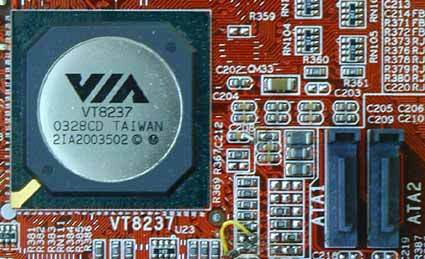Affordable and Reliable 80 and 160 GB Hard Drives
SATA Or PATA?
The acronyms SATA and PATA mean nothing more than Serial and Parallel AT Attachment, respectively. They signify today's fastest interfaces for storage media such as hard drives.
Parallel ATA, aka UltraATA/100 or UltraATA/133, remains the standard of choice if what you're looking for is a decent price/performance ratio. The interface works with 16 bits, transmits up to 100 or 133 MB/s, respectively, and lets two drives be run on each controller. One of the two assumes the lead and is thus the "master", while the other one is dubbed the slave. Whereas there used to be some compatibility problems, it's now nearly always possible to operate two drives on a single controller without a hitch. Only the bandwidth has to be split between the two drives.
The cabling is a pain: you need an 80-conductor flat cable of a maximum of 60 cm in length. But such cables are fragile and hard to set up. Despite that, today's mainboards already have an UltraATA interface on them, so you really can't go wrong.
Newer and theoretically much faster is Serial ATA I, or SATA for short, with 150 MB/s transfer rates. Instead of four data lines operated in parallel, this serial standard only uses four wires. The cables are therefore extremely compact, can be as long as one meter, and are easy to deal with. There is no speed advantage right now, for two reasons: First of all, hard drives aren't nearly that fast. Second, the PCI bus of today's systems allows a maximum of 133 MB/s. Yet the remarkably simple cabling justifies Serial ATA, provided the time and extra expenses involved aren't too high. With the next generation of chipsets, most new motherboards should leave the factory equipped with a corresponding controller.
For users who are not in possession of a SATA controller, we recommend deferring the switch until you buy your next PC or upgrade - the utility it offers just doesn't make up for the higher costs.
This is what the future looks like: components with integrated Serial ATA controllers are now available for all chipsets from Intel, SiS and VIA . If you use one of them, it's advisable to get a Serial ATA hard drive.
Get Tom's Hardware's best news and in-depth reviews, straight to your inbox.

Patrick Schmid was the editor-in-chief for Tom's Hardware from 2005 to 2006. He wrote numerous articles on a wide range of hardware topics, including storage, CPUs, and system builds.
